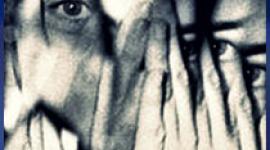Bipolar Disorder FAQs
 Comprehensive list of questions and answers about signs, symptoms and treatment of bipolar disorder and other related mood disorders.
Comprehensive list of questions and answers about signs, symptoms and treatment of bipolar disorder and other related mood disorders.
- What is bipolar disorder?
- What are the differences between bipolar I and bipolar II disorders?
- What is rapid cycling?
- At what age does bipolar disorder appear?
- Is bipolar disorder genetic?
- How is bipolar disorder treated?
- What medications are used to treat bipolar disorder?
- What is a manic episode?
- What is hypomania?
- What is dysthymia?
- What is major depression?
- What is atypical depression?
- What is meant by a mixed state?
- What is seasonal affective disorder?
- What is postpartum depression?
- What is schizoaffective disorder?
- What resources are available for people suffering from bipolar disorder?
- How can family members assist the bipolar patient?
- What are the challenges of bipolar disorder?
Bipolar disorder is a common, recurrent, severe psychiatric illness that affects an individual's mood, behavior and ability to think clearly. It occurs in 1% to 2% of the population in the United States. A variant, called bipolar II disorder, is probably even more common and occurs in up to 3% of the general population in this country.
2. What are the differences between bipolar I and bipolar II disorders?
Bipolar I disorder is characterized by episodes of mania that alternate with periods of depression or periods in which individuals have simultaneously occurring manic and depressive symptoms called mixed states. In contrast, bipolar II disorder is characterized by recurrent episodes of depression and milder symptoms of mania, called hypomania. Hypomanic episodes typically do not impair an individual's ability to function to the extent that full-blown manic episodes do Additionally, hypomanic episodes are not complicated by psychotic symptoms.
The term rapid cycling was originally coined by David Dunner, M.D., and Ron Fieve, M.D., in the 1970s when they identified a group of individuals who did not respond well to lithium. These patients typically had four or more episodes of mania or depression in the 12-month interval prior to lithium treatment. This definition has been adopted formally by DSM-IV (Diagnostic and Statistical Manual of Mental Disorders, 4th ed.) and specifically means the occurrence of four or more mood episodes within the preceding year. In severe cases, rapid cycling can occur even within a one-day period.
4. At what age does bipolar disorder appear?
Bipolar disorder most commonly presents in the late teens and early 20s. Unfortunately, for most individuals, lifelong treatment may be required to prevent recurrent manic and depressive episodes. Equally unfortunate is evidence that the illness often goes undiagnosed and untreated for many years; the longer the illness progresses without treatment, the greater the impairment in an individual's psychological, educational and vocational development. Additionally, untreated bipolar disorder carries a high risk of suicide.
5. Is bipolar disorder genetic?
Bipolar disorder, among all psychiatric illnesses, may have the greatest genetic contribution. For instance, if an individual has a parent with bipolar disorder, the chance that the individual's child will have bipolar disorder is about nine-fold greater than in the general population, with the risk rising from about 1% to about 10%. The inheritability of this illness is estimated to be anywhere from 50% to 80%. On the other hand, if a person with bipolar disorder is thinking about having children, there are still good odds that the child will not have bipolar illness. So the genetic determinants of the illness are complicated.
6. How is bipolar disorder treated?
The cornerstone of treatment is medications that treat acute manic, depressive or mixed episodes, and which, in the long run, attempt to prevent the recurrence of these episodes. Such medications include lithium, divalproex (Depakote) and, more recently, some of the atypical antipsychotics as well as antidepressants.
Psychotherapy plays an important role in improving the course and outcome of this illness in people. In particular, those with bipolar disorder often have strained relationships with loved ones because of their experiences during manic or depressive episodes; psychotherapy can help repair these torn relationships. In addition, psychotherapy can educate people about the signs and symptoms of their illness, how to pay attention to warning signs and how to nip emerging episodes in the bud. Psychotherapy can also help individuals cope with the stress that can sometimes precipitate manic or depressive episodes.
7. What medications are used to treat bipolar disorder?
There are a number of medications for the treatment of people with bipolar disorder, among them a group of medications called mood stabilizers. These include lithium and divalproex and possibly some other anticonvulsants and atypical antipsychotic drugs. The therapeutic strategy is to treat acute manic episodes and then continue long-term administration to prevent episode recurrence. These medications seem to be somewhat less effective than antidepressants in treating acute depressive episodes.
Antidepressants may be used in conjunction with a mood-stabilizing drug to pull someone out of a depressive episode. Such antidepressants include the older tricyclic antidepressants, the monoamine oxidase inhibitors and the newer selective serotonin reuptake inhibitors, venlafaxine (Effexor) and buproprion (Wellbutrin). There is some evidence that these new medications are better tolerated than the older antidepressants and may have less risk of precipitating hypomanic or manic episodes.
A manic episode is a discrete, recognizable psychiatric state that is often a medical emergency. It is characterized by severe alterations in mood consisting of euphoria, expansiveness, irritability and, sometimes, severe depression. In addition, people who are manic may have racing thoughts and speak very quickly in an uninterrupted fashion. Their behavior is characterized by increased activity, diminished sleep, a tendency to be distracted, engaging in many activities at once and disorganization.
Mania can occasionally become so severe that it is accompanied by psychotic symptoms such as delusions, hallucinations and very disorganized thinking, similar to schizophrenia. In addition, people in manic episodes can be very impulsive and occasionally violent. Often, unfortunately, they have little insight into their behavior during the throes of an actual manic episode.
Hypomania is a milder form of mania. Someone who is hypomanic typically is more active and energetic than usual. They may have accelerated thinking and speak very quickly but, overall, their functioning is not substantially impaired. The symptoms are not so severe as to hinder their ability to interpret reality or function in most areas of life.
Dysthymia is a state of chronic depression severe enough that people are plagued by some symptoms of depression, but not so severe that the number of depressive symptoms meet criteria for a full-blown major depressive episode. It is a chronic, mild depression rather than a frank, severe depressive episode. There is evidence, however, that people who have dysthymia suffer from as much or more disability over the long run, as compared to those who have severe depressive episodes but recover in between. Like major depression, dysthymia is an illness that can be successfully treated with antidepressant medications.
Major depression is a well-characterized medical illness that consists of a number of discrete symptoms. These include a persistently depressed mood for several weeks or longer and an inability to experience pleasure or enjoy normal activities.
Changes in basic functions include sleep and appetite disturbances, diminished interest in sex, and difficulty in making day-to-day decisions. Sufferers may also feel physically or cognitively anxious, agitated or very slow. Most conspicuously, they may sometimes have suicidal thoughts or even attempt suicide.
12. What is atypical depression?
Atypical depression distinguishes people who seem to have many of the symptoms of major depression, but have difficulty staying asleep or seem to sleep too much. Additionally, instead of having a diminished appetite, they have a marked increase in appetite, a sensitivity to interpersonal rejection and leaden paralysis-a feeling of being so depressed that it is major effort to do even basic tasks. Atypical depression resembles hibernation in that metabolism is slowed and sufferers sleep great lengths and eat excessively.
13. What is meant by a mixed state?
A mixed state is a combination of manic and depressive symptoms. While common, mixed states are underrecognized, with an estimated 40% of people who present with manic symptoms having a sufficient number of depressive symptoms to be diagnosed as being in a mixed manic and depressive state. Some studies have shown that suicidal thoughts are greatly increased in people in the midst of a mixed state. Treatment has been poorly studied, but recent evidence indicates that some of the newer medications, such as divalproex and olanzapine (Zyprexa), may be more beneficial than older drugs like lithium.
14. What is seasonal affective disorder?
Seasonal affective disorder (SAD) is a mood disorder occurring at a specific time of the year. The most common seasonal pattern is recurrent depression in late fall and early winter or sometimes in the late spring or early summer around the time of the solstices. There clearly seems to be some biologic component to this, perhaps having to do with ambient light and its duration and intensity. There has been a great deal of study in using bright-light therapy as a treatment intervention for mood disorder. In addition, standard treatments such as antidepressant medicines are also effective for treating people with a seasonal pattern to their mood disorder.
15. What is postpartum depression?
Postpartum depression is a major depressive episode following the delivery of a child. The length of the postpartum period for risk of depression varies, but the greatest risk is within the first one to three months after delivery. This is an especially vulnerable period, and obstetricians and pediatricians need to be especially vigilant during this time. Recognizing postpartum depression not only alleviates illness and suffering in the mother, but also prevents secondary effects on the growth and development of the infant.
16. What is schizoaffective disorder?
Schizoaffective disorder is really two different illnesses: schizoaffective disorder bipolar type, and schizoaffective disorder depressive type. The bipolar type resembles bipolar disorder with recurrent manic and depressive episodes over time, but has psychotic symptoms outside the manic or depressive episodes. The psychosis is more chronic punctuated by manic and depressive episodes. The depressive subtype resembles schizophrenia with chronic psychotic symptoms, but has recurrent depressive episodes.
17. What resources are available for people suffering from bipolar disorder?
There has never been a time of greater hope for people with this illness. There have been substantial advances in treatment in the last 10 years. Twenty years ago there was really only one medication, lithium, that was widely regarded to be effective. There are now a number of alternative mood stabilizers; there is a whole new generation of antidepressants for depression and another group of medications that may, over time, improve upon older mood stabilizers. There have also been advances in psychotherapy, including group therapy to improve functioning, cognitive therapy to reduce stress and improve functioning, and substantial support from consumer advocacy groups like the National Depressive and Manic Depressive Association (NDMDA).
18. How can family members assist the bipolar patient?
The first step for any family member is to educate themselves as well as the family member who has the illness about bipolar disorder. They should try to identify the features of the illness that are distinct to that individual, including the warning signs of recurrent manic or depressive episodes, so that someone in treatment can get immediate help to ward off those symptoms.
In addition, education helps people understand what is and is not within the control of an individual who has this illness. Family members can also assist with medication compliance and should be supportive in a health-supporting way for the family member with the illness. This will also prevent their own burnout and exhaustion.
19. What are the challenges of bipolar disorder?
There are still people who do not respond well to available medication. Compliance with treatment still remains a problem, as does access to treatment for many patients. People with serious psychiatric illnesses sometimes have problems obtaining appropriate mental health insurance coverage.
Furthermore, bipolar disorder is still underrecognized and underappreciated in the general population. People with bipolar disorder require individualized treatment. Many people do well with pharmacology-based treatment, but others need in-depth psychotherapy and support from community services, including rehabilitation and long-term treatment.
Source: Answers provided by Paul Keck, M.D., professor of psychiatry at the University of Cincinnati College of Medicine.
next: The High Prevalence of 'Soft' Bipolar II Features in Atypical Depression
~ bipolar disorder library
~ all bipolar disorder articles
APA Reference
Staff, H.
(2009, January 10). Bipolar Disorder FAQs, HealthyPlace. Retrieved
on 2026, January 7 from https://www.healthyplace.com/bipolar-disorder/articles/bipolar-disorder-faqs



